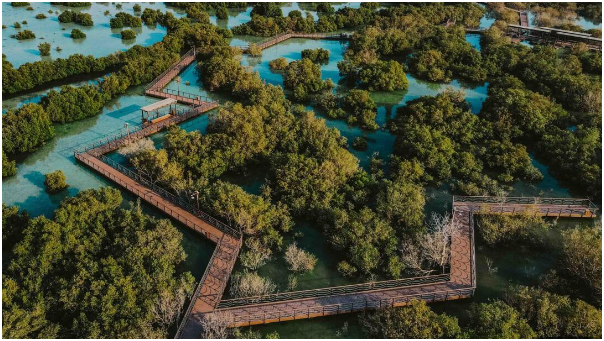Greening Dubai’s Monumental Quest to Plant 100 Million Mangrove Trees
Dubai, renowned for its towering skyscrapers, luxurious resorts, and sprawling urban landscape, is embarking on a groundbreaking initiative to transform its coastline. In a bid to enhance biodiversity, mitigate climate change impacts, and create sustainable green spaces, the emirate is set to undertake an ambitious project: the planting of 100 million mangrove trees along its shores. Spanning a staggering 72 kilometers, this endeavor marks a significant step towards fostering environmental stewardship and promoting ecological balance in one of the world’s most dynamic cities.
The vision to green Dubai’s beaches reflects a broader commitment to environmental sustainability and responsible development. Mangroves, with their unique ability to thrive in saline coastal environments, offer a multitude of ecological benefits. Not only do they serve as crucial habitats for diverse marine and bird species, but they also act as natural buffers against coastal erosion and storm surges. Additionally, mangroves play a vital role in carbon sequestration, helping to mitigate the effects of climate change by absorbing and storing significant amounts of atmospheric carbon dioxide.
The scale of the project is unprecedented, with plans to plant 100 million mangrove trees across Dubai’s coastline. This ambitious endeavor will not only transform the city’s aesthetic appeal but also create valuable green spaces for residents and visitors to enjoy. By reintroducing mangroves to the urban landscape, Dubai aims to reconnect its inhabitants with nature and foster a deeper appreciation for the environment.
The choice of mangroves as the focal point of this greening initiative is strategic, given their resilience and adaptability to coastal conditions. Mangrove ecosystems are renowned for their ability to thrive in challenging environments, offering valuable ecosystem services such as habitat provision, coastal protection, and carbon sequestration. By restoring and expanding mangrove habitats along its coastline, Dubai is taking proactive steps to safeguard its natural heritage and enhance the resilience of its coastal ecosystems.
The ecological benefits of mangroves extend far beyond their immediate surroundings. These unique ecosystems serve as nurseries for fish and other marine species, supporting commercial fisheries and sustaining livelihoods for coastal communities. Additionally, mangroves play a crucial role in maintaining water quality by filtering pollutants and trapping sediment, thereby preserving the health of coastal ecosystems and supporting biodiversity.
In addition to their ecological significance, mangroves also offer social and economic benefits to coastal communities. By creating green spaces for recreation and leisure, mangrove forests provide opportunities for ecotourism and nature-based activities, generating revenue and supporting local businesses. Moreover, mangroves contribute to climate resilience by providing natural buffers against extreme weather events, helping to protect coastal communities from the impacts of storms and sea-level rise.
The greening of Dubai’s beaches represents a paradigm shift in urban planning and development, emphasizing the importance of integrating nature into the built environment. By prioritizing Greening ecological restoration and biodiversity conservation, Dubai is setting a precedent for sustainable city development that prioritizes the well-being of both people and the planet. The project also aligns with the emirate’s broader sustainability goals, including its commitment to the United Nations Sustainable Development Goals and the Paris Agreement on climate change.
Central to the success of the mangrove greening project is collaboration between government agencies, private sector stakeholders, and civil society organizations. By harnessing the expertise and resources of multiple stakeholders, Greening Dubai can leverage synergies and maximize the impact of its greening efforts. This collaborative approach also fosters a sense of ownership and responsibility among stakeholders, ensuring the long-term sustainability of the project.
Education and community engagement are also integral components of the mangrove greening initiative. By raising awareness about the importance of mangrove ecosystems and the benefits they provide, Dubai can mobilize public support and encourage active participation in conservation efforts. Educational programs, guided tours, and volunteer opportunities can help foster a sense of stewardship among residents and inspire a culture of environmental sustainability.
Stay Connected: ”Your Source for the Latest News Updates”
Stay up to date with every latest news-click here





